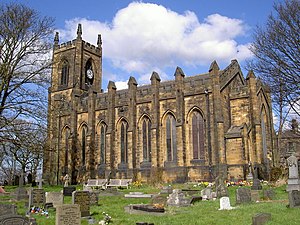
Thomas Taylor (born 1777 or 1778, died 1826) was an English artist and architect. Although he did not achieve the reputation or the output of Thomas Rickman, he was another pioneer in the use of the Gothic Revival style in church architecture. [1]

Thomas Taylor (born 1777 or 1778, died 1826) was an English artist and architect. Although he did not achieve the reputation or the output of Thomas Rickman, he was another pioneer in the use of the Gothic Revival style in church architecture. [1]
Nothing is known of Taylor's early life. During the 1790s he was working in the London office of the architect James Wyatt. At the same time, he enrolled in the Royal Academy Schools to study architecture on 15 July 1791, giving his age as 22. Between 1792 and 1811 he exhibited 58 pictures at the Royal Academy. Some of these pictures were landscapes, but most were of medieval buildings. By 1810 he had moved to Leeds, West Yorkshire, where he established an architectural practice, and continued to work as an artist. [2] He died in Leeds in 1826 when he was aged in his late 40s. [3]
His first known architectural work was the rebuilding of the south side of Leeds Parish church (1808–12) in Gothic Revival style, including a large window in the south transept. This was followed by Leeds Court House (1811–13) in Neoclassical style. [4] Taylor's first commission for a new church came from Revd Hammond Robertson (1757–1841), an enthusiast for the use of the Gothic style in church architecture. This was Christ Church, Liversedge, West Yorkshire. Robertson bought the site, paid for the act of Parliament, the Liversedge Chapel of Ease Act 1812 (52 Geo. 3. c. xi) and also paid for the church itself. The foundation stone was laid in 1812, and the church was consecrated in 1816. It was a large church, with aisles, a clerestory, a west tower, and a chancel larger than was normal at the time. Christ Church was the first new church in Gothic style to be built in the local region. [5] [6] [7] More churches followed locally, including Holy Trinity Huddersfield, constructed 1816-19. [8] [9] By 1815–16 he was also working in Lancashire, repairing churches in Colne and Rochdale, and rebuilding Holy Trinity Church, Littleborough (1816–20). [10] [11] [12]
The Church Building Act 1818 provided grants for the building of new churches, especially in areas where their building had not kept up with the growth of the population. The grants were administered by the Church Building Commission, and these churches are generally known as Commissioners' churches. [13] Taylor, because of his recent building experience and his geographical location, was ideally placed to receive commissions for these churches. In all he was commissioned to build seven of these churches, all in Yorkshire, [14] the first being St Lawrence, Pudsey (1819–24). [15] [16] During the time he was designing these churches, he was also designing other new churches, and carrying out repairs and alterations to existing churches. [17]
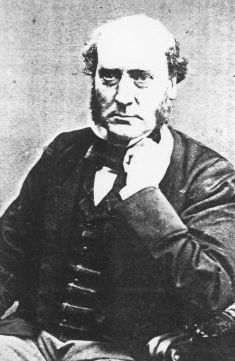
Sir George Gilbert Scott, largely known as Sir Gilbert Scott, was a prolific English Gothic Revival architect, chiefly associated with the design, building and renovation of churches and cathedrals, although he started his career as a leading designer of workhouses. Over 800 buildings were designed or altered by him.

Sir Charles BarryFRS RA was a British architect, best known for his role in the rebuilding of the Palace of Westminster in London during the mid-19th century, but also responsible for numerous other buildings and gardens. He is known for his major contribution to the use of Italianate architecture in Britain, especially the use of the Palazzo as basis for the design of country houses, city mansions and public buildings. He also developed the Italian Renaissance garden style for the many gardens he designed around country houses.
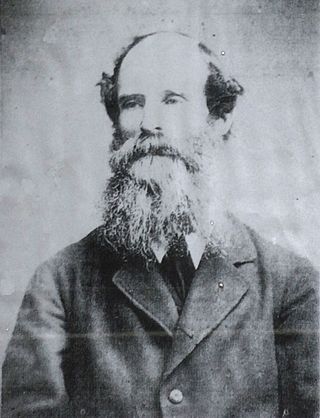
William White, FSA (1825–1900) was an English architect, noted for his part in 19th-century Gothic Revival architecture and church restorations.
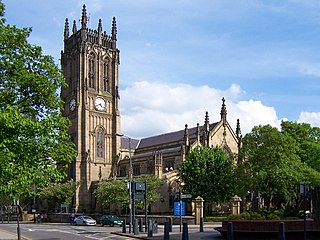
Robert Dennis Chantrell was an English church architect, best-known today for designing Leeds Parish Church, now Leeds Minster.

All Saints' Church or Stand Church is an active Anglican parish church in Stand, Whitefield, Greater Manchester, England. It is in the deanery of Radcliffe and Prestwich, the archdeaconry of Bolton, and the diocese of Manchester. The church is recorded in the National Heritage List for England as a designated Grade I-listed building. It was a Commissioners' church, having received a grant towards its construction from the Church Building Commission. The church is a tall building, standing on high ground, and is constructed on a platform.
George Webster was an English architect who practised in Kendal, which was at the time in Westmorland, and later in Cumbria. All of his works were executed near his practice, and were located in Cumbria, in north Lancashire, and in the adjacent parts of Yorkshire. Most of his work was carried out on domestic buildings, but he also designed churches, and public and commercial buildings.

Holy Trinity Church is in Mount Pleasant, Blackburn, Lancashire, England. It is a former Anglican parish church which is now redundant and under the care of the Churches Conservation Trust. It is recorded in the National Heritage List for England as a designated Grade II listed building.
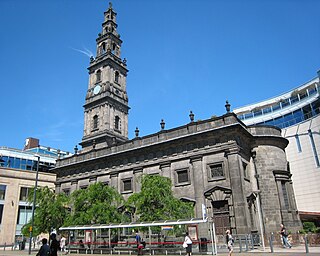
Holy Trinity Church lies on Boar Lane in Leeds, West Yorkshire, England. It is a Grade I listed Church of England parish church in the Parish of Leeds St George in the Diocese of Leeds. It was built in 1722–7, though its steeple dates from 1839. Holy Trinity is in the evangelical church tradition of the Church of England.

Holy Trinity Church is in the village of Hoghton, Lancashire, England. It is an active Anglican parish church in the deanery of Leyland, the archdeaconry of Blackburn, and the diocese of Blackburn. The church is recorded in the National Heritage List for England as a designated Grade II listed building. It is a Commissioners' church, having received a grant towards its construction from the Church Building Commission.

Holy Trinity Church, Bolton is a redundant Church of England parish church in Trinity Street, Bolton, Greater Manchester, England. It a Grade II listed building. It was a Commissioners' church, having received a grant towards its construction from the Church Building Commission.

West Yorkshire is a metropolitan county in the Yorkshire and the Humber region of England. Created as a metropolitan county in 1974 after the passage of the Local Government Act 1972, it consists of five metropolitan boroughs, namely the City of Bradford, Calderdale, Kirklees, the City of Leeds and the City of Wakefield. Its area corresponds approximately with the historic West Riding of Yorkshire, and it contains the major towns of Bradford, Dewsbury, Halifax, Huddersfield, Leeds, and Wakefield.
William Hill was an English architect who practised from offices in Leeds, West Yorkshire, England.
Edwin Hugh Shellard was an English architect who practised in Manchester, being active between 1844 and 1864. Most of his works are located in Northwest England, in what is now Greater Manchester, Lancashire, Cheshire, and Derbyshire. He was mainly an ecclesiastical architect, and gained contracts to design at least 13 churches for the Church Building Commission, these churches being known as Commissioners' churches. Most of his designs were in Gothic Revival style, usually Early English or Decorated, but he also experimented in the Perpendicular style. He employed the Romanesque Revival style in his additions to St Mary's Church, Preston. The National Heritage List for England shows that at least 23 of his new churches are designated as listed buildings, four of them at Grade II*. The authors of the Buildings of England series consider that his finest work is St John's Minster in Preston, Lancashire.

Holy Trinity Church is in Accrington Road, Burnley, Lancashire, England. It is a redundant Anglican parish church, and is recorded in the National Heritage List for England as a designated Grade II listed building. Holy Trinity is a Commissioners' church designed by Lewis Vulliamy in Early English style. The church was extended in 1871–72, but closed in 1990, and has been converted into flats.

Holy Trinity Church is a Church of England parish church in the town of Huddersfield, West Yorkshire, England. It opened in 1819 and is a grade II* listed building. The church is situated just off Trinity Street, named after the church and forming part of the main A640 road from Huddersfield to Rochdale, and is just outside the town centre, in the suburb of Marsh. The parish forms part of the diocese of Leeds.